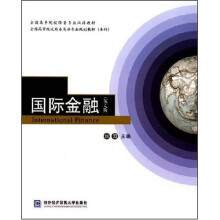1 Balance of Payments
1.1 International transactions: the balance of payments
1.2 Balance of payments surplus and deficit
1.3 Economic forces and the balance of payments
2 Theories of Balance of Payments
2.1 The elasticity approach to the balance of payments
2.2 The absorption approach to the balance of payments
2.3 The monetary approach to the balance of payments
3 Macroeconomic Policy in an Open Economy
3.1 The problem of internal and external balance
3.2 The Mundell-Fleming model
3.3 Conclusions
4 Fixed, Floating and Managed Exchange Rates
4.1 Definitions and types of the exchange rate
4.2 The case for fixed exchange rates
4.3 The case for floating exchange rates
4.4 Managed floating
4.5 Conclusions
5 Models of Exchange-rate Determination
5.1 Purchasing power parity
5.2 Covered interest parity
5.3 Market efficiency, uncovered interest parity and real interest parity
5.4 Foreign exchange risk management
6 The Foreign Exchange Market
6.1 The basics of the foreign exchange market
6.2 Mechanics of the foreign exchange market
7 Currency Futures, Options and Swaps
7.1 Introduction
7.2 Currency futures
7.3 Currency options
7.4 Currency and interest swaps
8 International Lending and Financial Crises
8.1 International lending to developing countries
8.2 Financial crises: What can and does go wrong
8.3 Resolving financial crises
8.4 The frequency of fmancial crises
9 The International Monetary System
9.1 The Bretton Woods system
9.2 The post-Bretton Woods era
9.3 The Jamaica conference of 1976
9.4 The present exchange-rate system
10 The Eurocurrency and Eurobond Markets
10.1 Participants in the Eurocurrency and Eurobond markets
10.2 The Eurocurrency markets
10.3 The Eurobond markets
11 Foreign Direct Investment and International Capital Budgeting
11.1 Background
11.2 Approaches to international business ~
11.3 Theories of FDI
11.4 More about taxation
11.5 Foreign direct investment and country risk
11.6 Transfer pricing
Test One
Key to Test One
Test Two
Key to Test Two
References

 缺书网
缺书网 扫码进群
扫码进群






